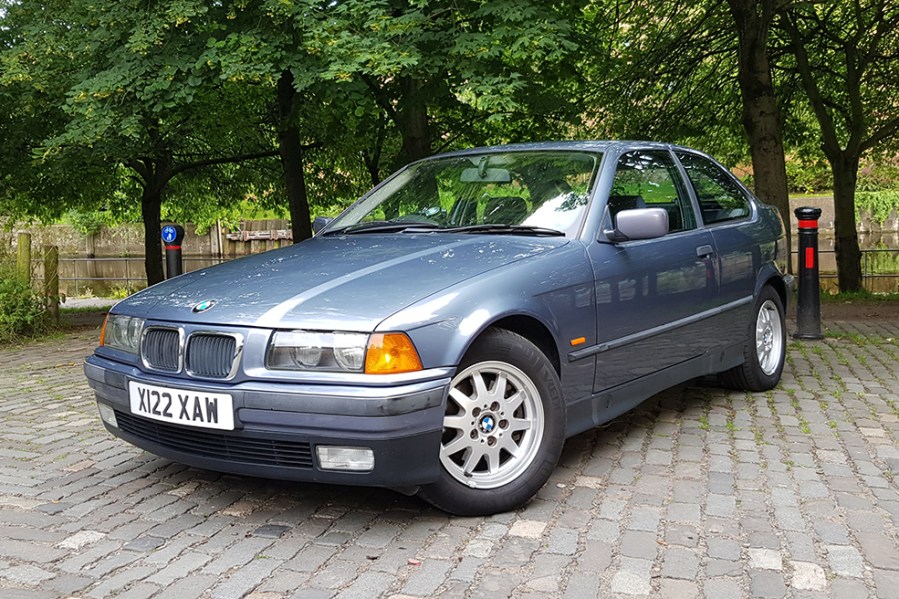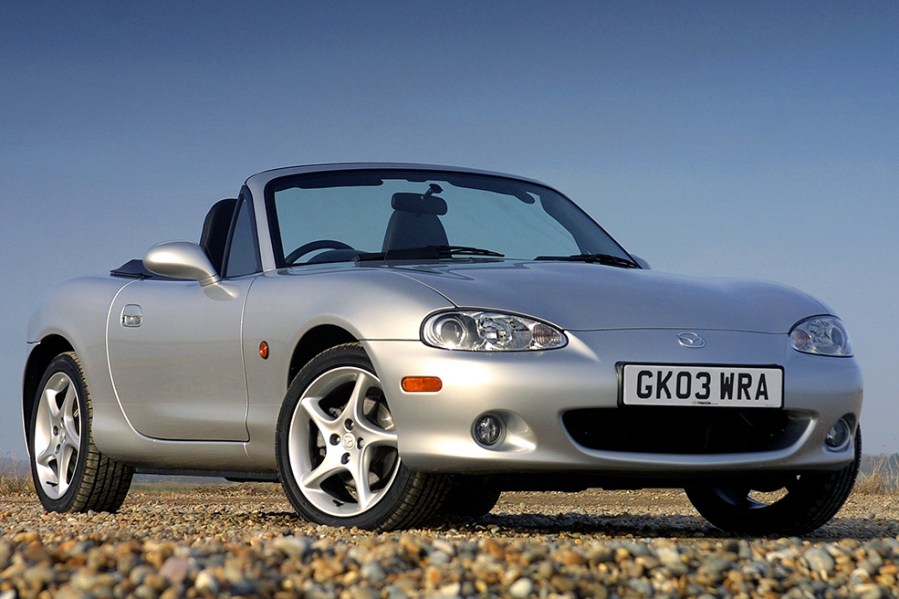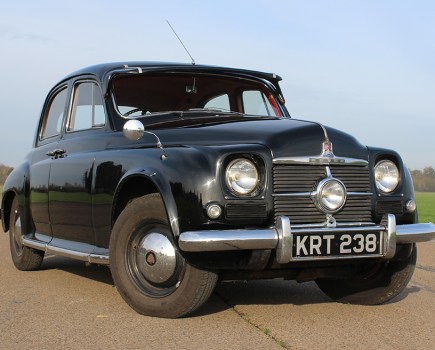Despite the current state of the market, it’s still possible to find a great classic car under £2000. Here are our top picks
Words: Joe Miller, Jeff Ruggles, Paul Wager, Phil Weeden, James Howe
The bargain-basement end of the used car market isn’t quite as bountiful as it once was, especially where classics are concerned. Most older, more interesting machines have seen values rise to above the £2000 threshold, with the price bracket filled instead with unloved thirsty or expensive-to-tax vehicles from the mid-2000s, or simply rust-filled projects that would require serious commitment to take on.
However, if you look hard enough, bargains can still be found. As our list shows, the majority will be products of the 1990s; this may seem modern to some despite the fact that the youngest products of that decade are almost a quarter of a century old. Quite simply, cars of the 1990s and early 2000s are to today’s buyer what products of the 1970s were to classic car enthusiasts in the 1990s.
Of course, it’s possible to find some bona fide classics from the 1960s, 70s and 80s for under £2000 (see our second choice as an example), but quality is likely to be severely lacking and you’ll need to be extremely careful.
Here are some sure-fire ways to enjoy an old, interesting car for under £2000.
Mazda MX-5 Mk2
Just as the Mazda MX-5 replaced the much-missed MGB as the approachable convertible sports car of choice when it launched in 1989, it also went on to do the same in the classic car world when tidy MGBs started climbing up to and beyond the £10,000 mark. The MX-5’s multi-million global sales have resulted in a simply vast fanbase and endless regional, national and international clubs (chief among which being the MX5OC), as well as parts support for repair, restoration and modification the likes of which only the MGB or Mini can match.
The Mk1 MX-5 is now an iconic classic that’s 35 years old in 2024, which combines with the numbers thinning as a result of drifters and increasingly ferocious rust to dramatically increase values. A project MK1 will break our £2000 budget, while nice examples often command £10,000. By contrast, the revised (and objectively, much improved) Mk2 can be yours for comfortably sub-£2000.
The Mk2 MX-5 was launched in 1998 and progressively improved. An updated interior compete with airbags and a glass rear window, improved suspension and chassis stiffness, the option of more powerful engines and a six-speed gearbox are all benefits to buying the Mk2 MX-5. True, rust in the front chassis legs – as well as the typical MX-5 trouble areas of sills and arches – is an issue, but that fantastic specialist support means remedying this needn’t be costly or difficult. Throw in eager, revvy engines, fun and nimble handling, drop-top fun and a host of like-minded fans, and a Mk2 Mazda MX-5 makes for the perfect sub-£2000 classic buy.
Morris Minor
Widely credited as being the car that kick-started the classic car movement, the Morris Minor has remained an affordable prospect ever since, values never having taken off in the way air-cooled Porsche or 1960s Jaguars have.
Parts support also remains tremendous, and there’s pretty much nothing in the way of body and trim you can’t get for a Minor of any age. Mechanical components, meanwhile, were shared with so many other BMC/BL cars of the era that – certainly for the A-Series cars – you’ll never be off the road for want of a crucial component.
For the most part the Moggy is ideal for a keen hands-on owner too, but with the caveat that extensive rust repairs can be tricky. This was an early example of unitary construction when designers and engineers were still feeling their way with monocoque bodyshells and as a result, there are several double-skinned areas which require specialist skill or workshop facilities to weld. On the other hand, simple patch repairs are easy on the accessible areas and repair sections are all available.
As for which model to go for, it’s easy to get confused but luckily a £2000 budget narrows it down a lot by ruling out the more costly commercial models, plus the Traveller and the convertible.
The budget also rules out the very early lowlight models and in truth, these underpowered sidevalve cars are best left for the diehard enthusiasts anyway, as are the very early 803cc A-Series cars. Quite neatly then, that guides us to the Minor 1000 saloon and preferably in the post-1962 1098cc guise which has the pace to keep up with modern traffic.
With some luck, You should be able to bag something at auction for around £2000, though if you can find something a little cheaper, that’ll leave a few quid in the kitty for a brake servo conversion – the standard-fit Minor drums being about its only drawback in modern urban traffic.
BMW 3 Series Compact (E36/5)
Misunderstood by many and traditionally derided by purists, the E36 Compact was BMW’s answer to early movements at the posher end of the hatchback market. Aimed squarely at the Volkswagen Golf and later its Audi A3 cousin, the Compact was something of a half-way house between 3 Series generations in mechanical terms; today, it’s still an underappreciated bargain when compared to its full-size E30 and E36 counterparts.
Contrary to popular belief, the car’s wheelbase is no shorter than that of a standard E36, with the difference in overall length attributable to the Compact’s docked tail. There are mechanical differences at the rear, however, as the Compact uses the E30’s semi-trailing arm suspension rather than E36’s multi-link setup. Received enthusiast wisdom says this a downgrade, but really it’s a bit of a non-issue for most drivers, and keeps repairs and maintenance cheap.
It’s particularly hard to step beyond the limits of the Compact’s chassis given the available engines – the entry-level 316i sported a heady 101hp, while the most powerful UK model was the 318ti with 138hp. Later cars had a bit more torque and produced peak power lower down in the rev range, but no Compact could be described as fast.
Much like so many cars in this feature, driving pleasure in the Compact comes instead from the sensation of a small-engined, lightweight, rear-wheel-drive car with great steering, a decent driving position and a responsive engine. The M44 unit in the 318ti specifically isn’t the smoothest in its operation and sounds a little uninspiring, but it’s a solid unit that doesn’t mind being worked to deliver its best. Prices have risen slightly in the last few years but you can still secure a good example within our £2000 budget.

MINI Convertible (R50)
BMW era Minis are really coming into their own as easy-to-live-with modern classics. With every subsequent generation of MINI that followed the R50 (unveiled in 1997 but not launched until 2001) the better that original Frank Stephenson penned design looks. The Convertible introduced 20 years ago makes an even stronger case for itself in terms of future classic status and outright desirability.
Modern MINIs tend to be very spec-dependent. A Cooper S model with its 168bhp supercharged four-pot engine has to be the pick of the bunch but, at the £2000 mark, there is a risk that you might end up with a sub-optimal example. The Sidewalk limited edition models that came in One, Cooper and Cooper S spec are a good shout, however, and if you can find one of those you’re definitely into future classic territory.
The styling and overall proportions of the R50 are good, and thanks to MacPherson strut front suspension and BMW’s clever Z-axle set-up at the rear, the handling on this pocket rocket is superb. The ride’s a bit rattly, and certainly even worse on the drop-top model, but the engine is bullet proof on the whole, and post-2004 cars have a better Getrag gearbox.
Hoods can be temperamental and paintwork can be a bit patchy on less well cared for examples, but there’s plenty of club and aftermarket support for these cars. Plus, they sold over 130,000 of these MINIs in the UK alone, so there’s an abundance of stock right now and one can afford to be picky, even at this budget.

Ford Puma
On paper, it’s all too easy to dismiss the Ford Puma as little more than a go-faster Mk4 Fiesta with a reputation for rampant rust. But the Puma was a leading example of Ford’s driver-led 1990s renaissance, and provides entertainment that’s very much at odds with its value.
In truth, the Mk4 Fiesta was a decent steer to start with, but Ford’s Special Vehicle Engineering Department tweaked the suspension and the steering to make the Puma even better. Then there’s the Zetec-SE engines, co-developed in conjunction with Yamaha. This association was developed further for the most desirable 1679cc version, unique to the Puma. It churns out a modest 125bhp, but the VCT gives it another dimension and that short gearing means it always feels willing.
Exterior-wise, the pretty ‘New Edge’ styling won it many fans and still looks great today, while the big boot means it’s practical too. Sure, there are downsides; the rear parcel shelf will break, opening the boot in the rain will soak your shopping and hidden rust can be a problem that costs more to fix than the car is worth, but find a good one and you’ll be shocked at just how enjoyable these little Ford coupes are.
A hike in value threatened to finally happen a few years ago, but it’s not really materialised, meaning £2000 can net you something reasonably solid. There was a 1.4-litre version too, replaced by a 1.6-litre in 2000, but while these are competent enough, the 1.7-litre car is the one to have.
When you consider the prices of other hot Fords – and that a Puma will likely beat an RS Turbo on track – £2000 is a bargain. Get one now before they’re all gone.





